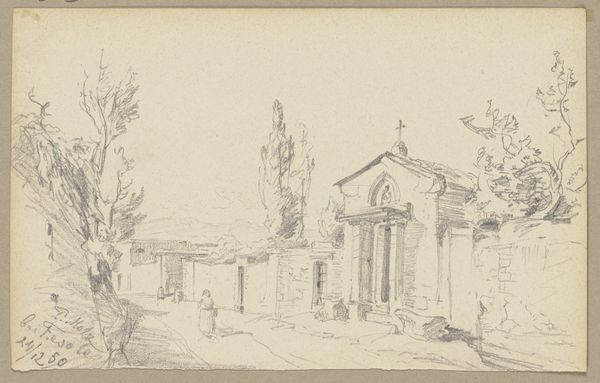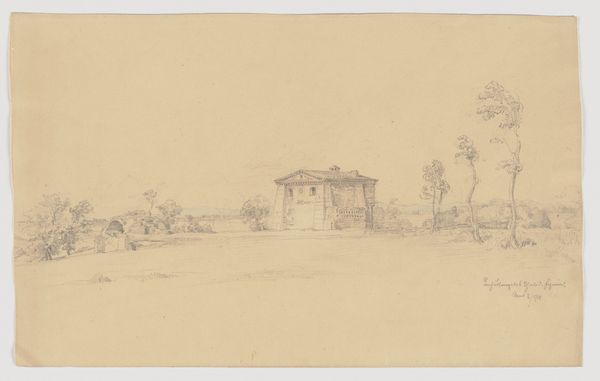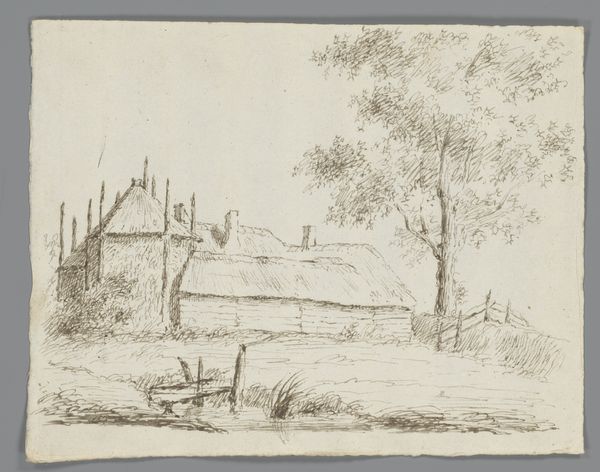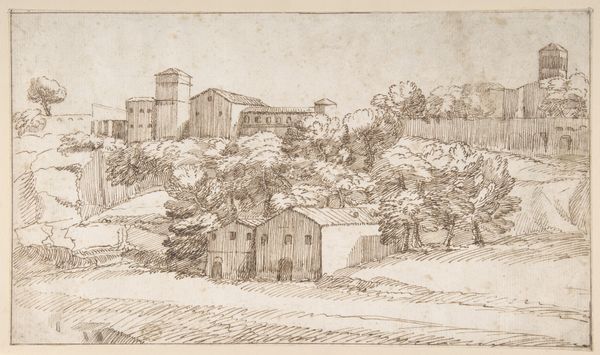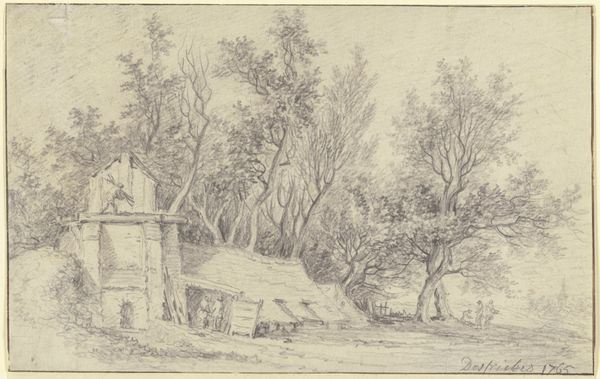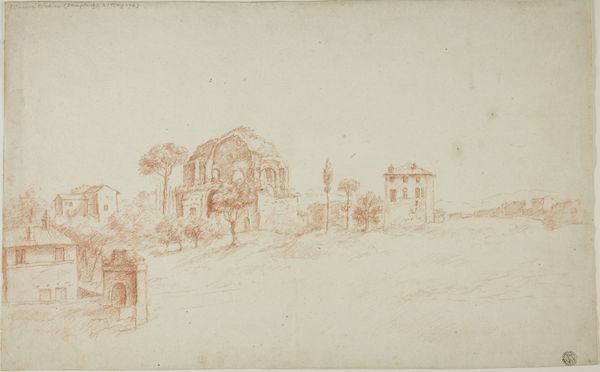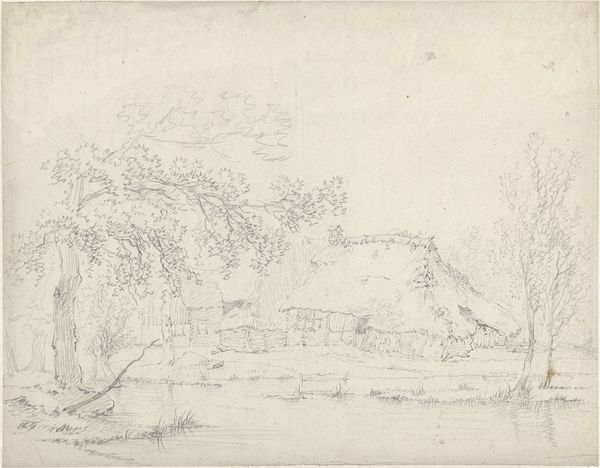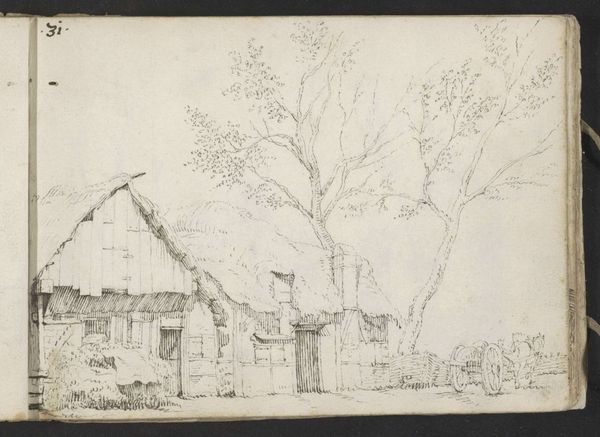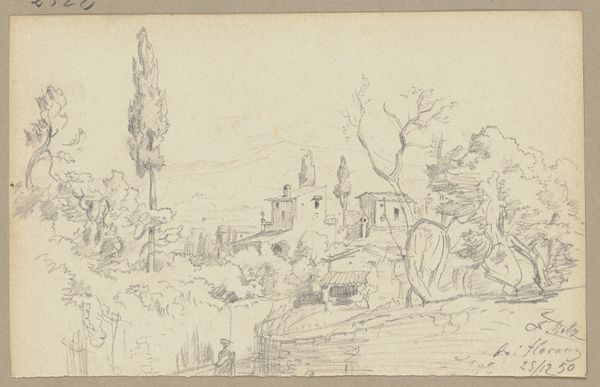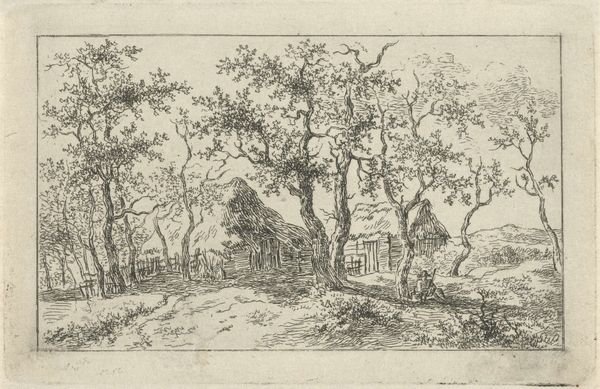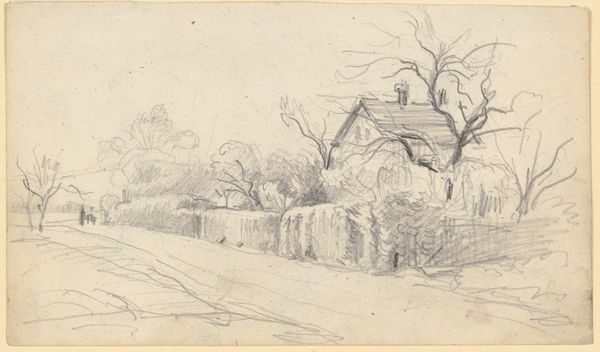
Copyright: Public Domain
Curator: We're looking at Friedrich Metz's "Italian Landscape," a pencil drawing created in 1851, now housed in the Städel Museum. Editor: Immediately, I feel this delicate sort of loneliness looking at it, like a stage set between acts. All that soft grey pencil, the way everything kind of fades into everything else. What’s it about for you? Curator: I see it as part of the broader 19th-century artistic interest in Italy, specifically regarding its entanglement with romanticism, academic-art traditions and how they both influence artistic representation of the region. These artists aimed to capture something "authentically Italian," whether through careful studies like this or idealized paintings. Editor: So, a bit of the Grand Tour aesthetic? I get the romantic angle; those spindly trees frame the composition like yearning arms. And that small church, almost swallowed by the emptiness... it does make you wonder. Curator: Exactly. Metz and his contemporaries were wrestling with ideas of history, national identity, and even religious feeling when rendering these landscapes. He seems very invested in precise observation, particularly regarding details like the building’s architectural features, the shapes of the bare trees, or even the little pathway bordering a wall. Editor: You can sense his precision, definitely. He really knew how to work those pencils to play with the light here. The building stands at its centre in such subtle tonalities that I barely even notice its presence… and that wall appears almost infinite, making the building look caged within its surroundings! Curator: Perhaps a representation of established religion constrained by the modern state or modern thinking, don’t you think? Or just of the old slowly disappearing to modernity… I do feel it is relevant that we consider his broader context of engagement with cultural, social, and political movements of the time. Editor: I am sure it might be possible… For me, I guess it's just a sweet, melancholy mood. A feeling of having been somewhere beautiful and distant, even as you leave. Curator: Ultimately, I see this as a piece about negotiating the complex layers of history, culture, and personal emotion attached to place. Editor: For me it is that ghostly, grey atmosphere. Makes you wonder what he felt there. What you'd feel there, standing in that same space.
Comments
No comments
Be the first to comment and join the conversation on the ultimate creative platform.
